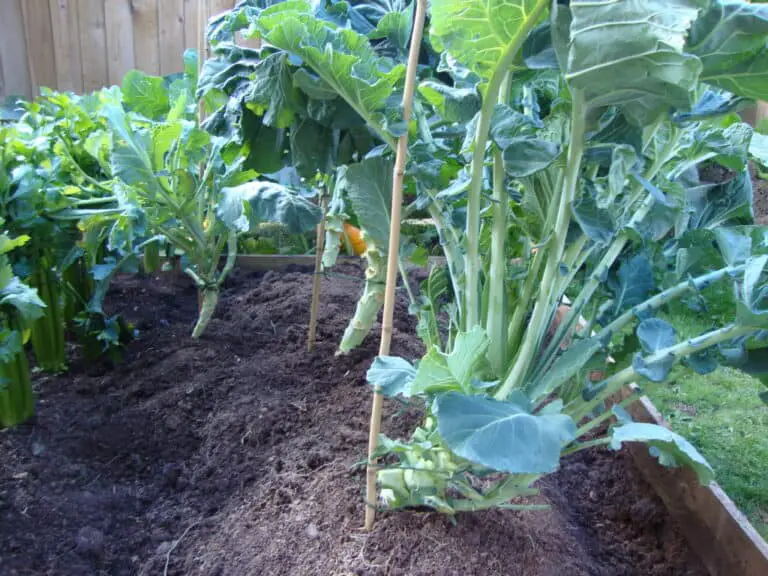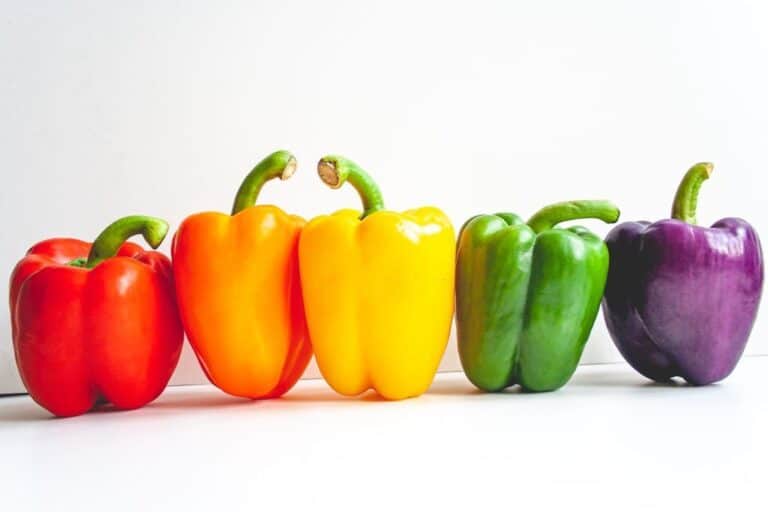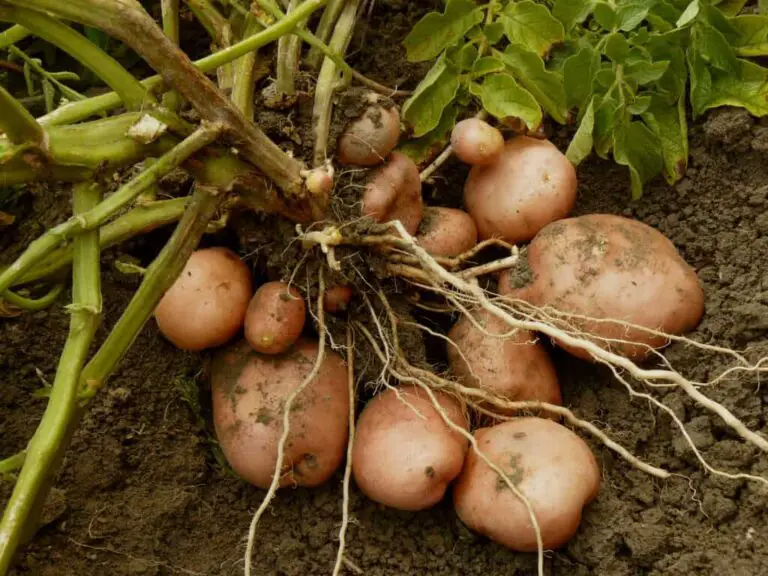Do Brussel Sprouts Grow Underground? How Deep Do They Need To Grow?
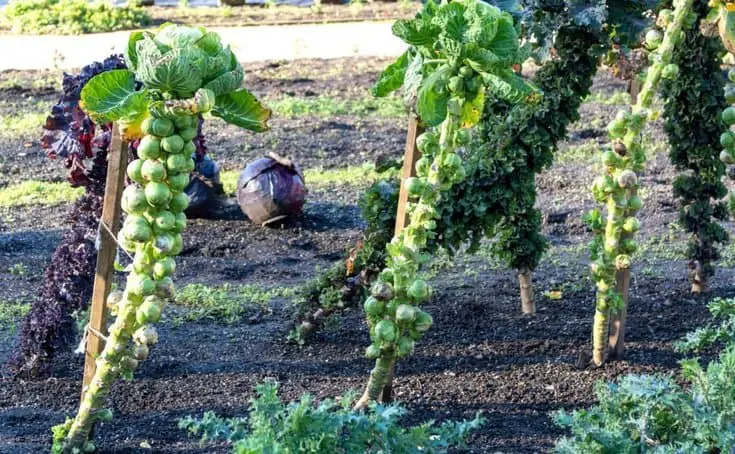
Are you a fan of Brussel sprouts? These miniature greens, resembling tiny cabbages, have earned a special place on many dinner plates. But have you ever wondered about their mysterious journey from seed to table? One question that often arises is whether Brussel sprouts grow underground. Do their roots reach deep into the soil, or do they have a hidden subterranean life?
Today, we will unveil the truth and dive into the fascinating world of Brussel sprout cultivation. Join us as we explore the depths—both literal and figurative—of Brussel sprout growth. We’ll debunk the myths and reveal the secrets behind their development.
Get ready to uncover the mysteries of these delightful veggies and learn just how deep they need to grow. It’s time to unearth the truth about Brussel sprouts and discover the hidden wonders beneath the soil surface.
Brussel Sprouts Plant Profile
Brussel sprouts, scientifically known as Brassica oleracea var. gemmifera, belong to the Brassicaceae family. These tiny veggies are a member of the cruciferous vegetable family, which also includes cabbage, broccoli, and kale. Brussel sprouts are characterized by their small, round, tightly packed leafy buds that resemble miniature cabbages. They have a unique flavor that is often described as nutty or slightly sweet.
Believed to have originated in ancient Rome, Brussel sprouts gained popularity in Belgium during the 16th century, hence the name “Brussel” sprouts. Today, they are cultivated in various parts of the world and have become a staple in many cuisines due to their versatility and nutritional value.
The Growth Cycle of Brussel Sprouts
Brussel sprouts are cool-season crops that thrive in temperatures between 60°F and 65°F (15°C to 18°C). They require a long growing season of about 90 to 100 days from transplanting to harvest. To ensure a successful harvest, it’s essential to understand the Brussels sprouts growth cycle.
- Seedling Stage: The journey of a Brussel sprout begins with sowing the seeds indoors, 6 to 8 weeks before the last frost date. Plant the seeds in seed trays or pots, about half an inch deep in a well-draining seed-starting mix. Keep the soil consistently moist, and provide sufficient light for healthy seedling development.
- Transplanting: Once the seedlings have grown to about 3 to 4 inches tall and have developed a strong root system, it’s time to transplant brussel sprout outdoors. Choose a sunny location in your garden with fertile soil. Brussel sprouts prefer a soil pH of 6.0 to 7.5 for optimal growth.
- Establishment: During the establishment phase, Brussel sprouts focus on root and foliage development. Ensure that the plants receive at least 1 inch of water per week, either from rainfall or supplemental irrigation. Mulching around the plants can help retain soil moisture and suppress weed growth.
- Sprout Formation: As the plants mature, small sprouts start forming along the stem’s leaf axils, starting from the bottom and progressing upwards. These sprouts will continue to enlarge and become ready for harvest over time.
- Harvesting: Harvesting Brussel sprouts is an ongoing process. Begin harvesting the sprouts from the bottom of the plant when they reach a size of about 1 inch in diameter. Twist or cut them off carefully, ensuring not to damage the plant. The lower sprouts mature earlier, while the upper ones continue to grow. You can continue harvesting until the entire stem has been picked or until the sprouts become loose and start to open.
Brussel Sprouts’ Root System
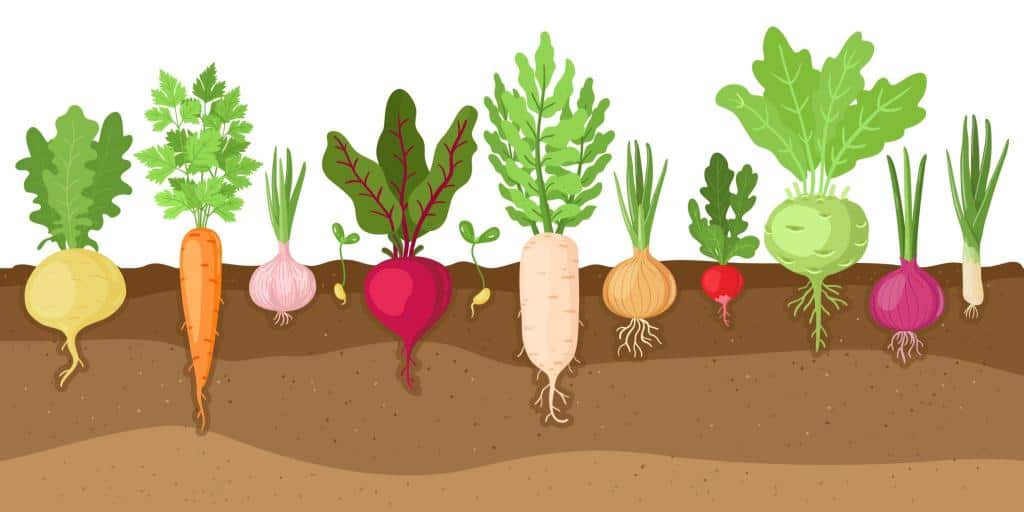
The root system of Brussel sprouts plays a crucial role in the plant’s overall health and growth. It consists of a primary taproot, which grows vertically downward, and lateral roots that extend horizontally in the soil. The primary taproot anchors the plant and provides stability, while the lateral roots branch out to explore the surrounding soil for nutrients and water.
Roots are essential for the absorption of water and minerals from the soil. They also facilitate the transportation of these nutrients to the above-ground parts of the plant. Additionally, the roots engage in a symbiotic relationship with soil microorganisms, forming mycorrhizal associations that enhance nutrient uptake and overall plant health.
The Myth of Underground Growth
Now, let’s address the common misconception: Do Brussels sprouts grow underground? The answer is no. Brussel sprouts do not grow underground; they grow on the above-ground portion of the plant.
The sprouts emerge from the leaf axils along the stem, nestled between the leaves. They may have a bit of dirt or debris trapped between the leaves, giving the false impression that they grow underground.
Contrary to popular belief, the edible part of Brussel sprouts does not grow entirely underground. While the root system extends below the soil surface, the sprout buds themselves develop above ground. The sprout buds emerge from the leaf axils of the stem, forming compact clusters that resemble tiny cabbages. These buds grow larger and become more tightly packed as the plant matures.
Factors such as adequate sunlight, nutrient-rich soil, and proper moisture levels contribute to the healthy development of Brussel sprout buds. During the growth process, the leaves surrounding the sprouts provide protection and shade, ensuring that the buds remain tender and flavorful.
How Deep Do They Need to Grow?
While Brussel sprouts don’t grow underground, they do require a specific depth to grow properly. When transplanting the seedlings, make sure to set them deep enough in the soil to provide stability.
Ideally, the base of the stem should be planted 1 to 2 inches (2.5 to 5 centimeters) below the soil surface. This depth allows for a strong root system to develop and helps support the plant as it grows taller.
However, it’s important not to bury the entire stem or the growing point of the plant. The growing point, also known as the crown, should remain at or slightly above the soil level. Burying it too deeply can hinder the growth and development of the plant.
To ensure the proper depth, you can create a small hole or trench in the soil and gently place the seedling, making sure the base of the stem is at the desired depth. Then, carefully backfill the hole or trench, firming the soil around the stem to provide stability.
Nutritional Requirements for Brussel Sprout Growth
To thrive and develop into healthy plants, Brussel sprouts have specific nutritional requirements. Let’s take a closer look at these requirements:
1. Soil requirements and fertility: Brussel sprouts prefer well-drained soil with a pH level between 6.0 and 7.5. The soil should be rich in organic matter and nutrients. Before planting, it is advisable to amend the soil with compost or well-rotted manure to improve its fertility.
2. Sunlight and temperature needs: Brussel sprouts thrive in full sun, requiring a minimum of 6 hours of direct sunlight each day. They prefer cool weather and can tolerate temperatures between 45°F and 75°F (7°C and 24°C). Cooler temperatures enhance their flavor development.
3. Water and irrigation considerations: Brussel sprouts require consistent moisture throughout their growth cycle. Adequate watering is crucial, especially during dry spells. It is recommended to provide 1 to 1.5 inches of water per week, either through rainfall or supplemental irrigation.
Optimal Depth for Brussel Sprout Growth
Now, let’s address the depth at which Brussel sprouts should grow for optimal development:
1. Ideal soil depth for planting Brussel sprouts: Brussel sprouts need a deep soil profile to accommodate their extensive root system. The ideal depth for planting is around 12 to 18 inches (30 to 45 cm). This depth allows the roots to penetrate deeply and anchor the plant securely.
2. Impact of soil depth on root development: Adequate soil depth promotes healthy root development in Brussel sprouts. It allows the roots to explore a larger volume of soil, ensuring better nutrient uptake and water absorption. Deep roots also contribute to the overall stability and vigor of the plant.
3. Ensuring adequate depth for successful growth: When preparing the planting area, it is essential to loosen the soil to the recommended depth. This helps create a favorable environment for root penetration and expansion. Adding organic matter and ensuring proper drainage can further enhance the depth and quality of the soil.
Factors Affecting Brussel Sprout Rooting Depth
Several factors can influence the rooting depth of Brussel sprouts. Let’s explore these factors:
- Varietal differences in rooting depth: Different Brussel sprout varieties may exhibit variations in their rooting depth. Some varieties may develop deeper root systems compared to others. It is advisable to choose varieties that are well-suited to your specific growing conditions.
- Soil composition and structure: The composition and structure of the soil play a crucial role in determining rooting depth. Well-drained soils with good structure allow roots to penetrate deeply. Heavy clay soils, on the other hand, may restrict root growth and require additional soil amendments to improve drainage.
- Environmental factors influencing rooting depth: Environmental conditions such as water availability, temperature, and nutrient distribution can impact rooting depth.
- Water availability: Adequate moisture in the soil encourages roots to explore deeper depths. In dry conditions, roots may remain closer to the surface in search of water. Consistent watering practices can promote deeper root growth.
- Temperature: Brussel sprouts prefer cool temperatures, but extremes can affect their rooting depth. Extremely hot conditions may cause shallower root growth, while frosty conditions can inhibit root development. Providing a favorable temperature range promotes optimal root growth.
- Nutrient distribution: The distribution of nutrients in the soil can influence rooting depth. Nutrients that are concentrated in the upper layers of the soil may encourage shallower root growth. Ensuring a balanced nutrient supply throughout the soil profile can support deeper root exploration.
Tips for Growing Brussel Sprouts
Now that we know Brussel sprouts don’t grow underground but require a specific planting depth, let’s explore some additional tips to help you grow healthy and delicious sprouts:
- Sunlight: Brussel sprouts thrive in full sun, which means they need at least six hours of direct sunlight each day. Ensure your garden location receives ample sunlight to promote strong growth and development.
- Soil Preparation: Before planting, prepare the soil by incorporating organic matter, such as compost or well-rotted manure. This helps improve soil fertility, drainage, and overall soil structure.
- Spacing: Brussel sprouts require adequate spacing to allow proper air circulation and reduce the risk of diseases. Plant them about 24 to 36 inches (60 to 90 centimeters) apart in rows that are 3 feet (90 centimeters) apart.
- Watering: Brussel sprouts need consistent moisture throughout their growing season. Water deeply and regularly, especially during dry periods. Aim for about 1 inch of water per week, either from rainfall or supplemental irrigation.
- Fertilization: Provide the plants with regular feeding to ensure they have the necessary nutrients for optimal growth. Apply a balanced fertilizer, such as a 10-10-10 or 14-14-14 formula, following the package instructions.
- Pest and Disease Management: Keep an eye out for common pests that can affect Brussel sprouts, such as aphids, cabbage worms, and slugs. Consider using organic pest control methods or natural predators to manage these pests. Additionally, practicing crop rotation and good garden hygiene can help prevent diseases.
- Support: As the plants grow taller and the sprouts develop, they may become top-heavy. To prevent the plants from toppling over, provide brussels sprout support by staking or using cages. This helps maintain stability and prevents damage to the stems and sprouts.
Conclusion
Brussel sprouts, despite their small size, pack a punch of flavor and nutrition. They do not grow underground but rather on the above-ground portion of the plant. When transplanting, ensure the base of the stem is planted 1 to 2 inches below the soil surface for stability.
Following proper care practices, including providing sufficient sunlight, spacing, watering, and support, will help you grow healthy and bountiful Brussel sprouts. So, roll up your sleeves, get your gardening tools ready, and enjoy the satisfaction of growing your own tasty Brussel sprouts right in your backyard!
FAQs
Do Brussel sprouts develop entirely underground?
No, Brussel sprouts do not grow entirely underground. The edible part of the plant, which is the sprout buds, develops above ground.
How deep should I plant Brussel sprouts?
It is recommended to plant Brussel sprouts at a depth of around 12 to 18 inches (30 to 45 cm) to allow for optimal root development.
What happens if I plant Brussel sprouts too shallowly?
Planting Brussel sprouts too shallowly can result in restricted root growth and potential instability of the plant. Adequate depth is important for healthy and vigorous growth.
Are there different varieties of Brussel sprouts with varying rooting depths?
Yes, different varieties of Brussel sprouts may exhibit variations in rooting depth. Some varieties may develop deeper root systems compared to others.
How can I improve soil depth for Brussel sprouts?
You can improve soil depth by loosening the soil to the recommended depth using a garden fork or tiller. Adding organic matter and ensuring proper drainage can also enhance the depth and quality of the soil.
Can Brussel sprouts tolerate extreme temperatures?
Brussel sprouts prefer cool weather and can tolerate temperatures between 45°F and 75°F (7°C and 24°C). Extreme heat or frosty conditions can affect their growth and rooting depth.
When is the right time to harvest Brussel sprouts?
Brussel sprouts are typically ready for harvest when the sprouts reach a size of about 1 to 2 inches (2.5 to 5 cm) in diameter. Harvesting time can vary but generally occurs between 90 to 120 days from planting.
Should I prune the roots of Brussel sprouts?
It is not necessary to prune the roots of Brussel sprouts. Pruning the roots can disrupt the plant’s stability and potentially harm its growth. Focus on providing proper soil preparation, watering, and fertilization to support healthy root development naturally.
Can I grow Brussel sprouts in containers on a balcony?
Yes, Brussel sprouts can be grown in containers on a balcony. Choose larger containers that are at least 12 inches deep to allow for sufficient root growth. Ensure the containers have drainage holes to prevent waterlogging. Place the containers in a location that receives full sun for most of the day. Regularly water the plants to keep the soil evenly moist. Remember to fertilize them regularly to provide the necessary nutrients.



